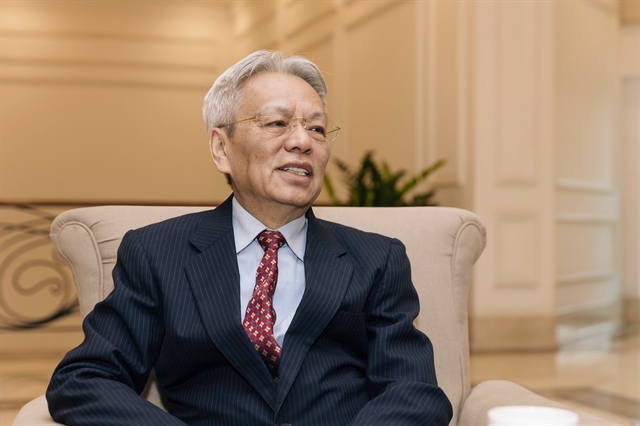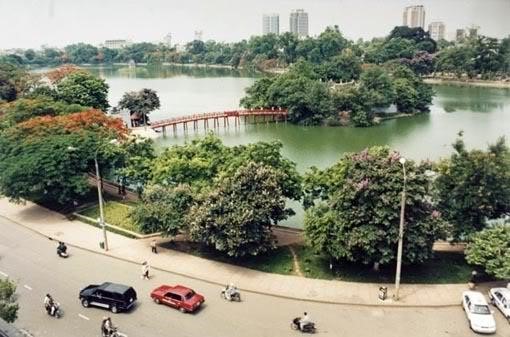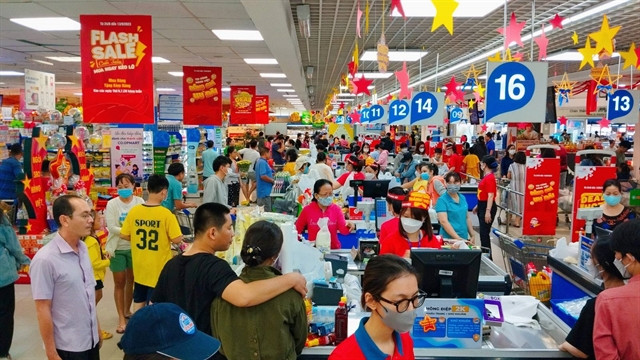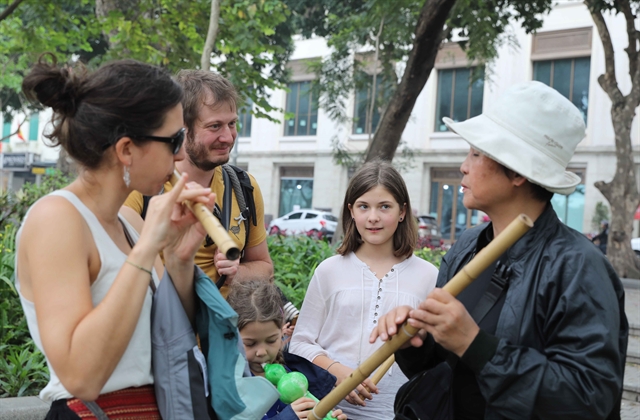 Opinion
Opinion

Dr Đào Ngọc Nghiêm, vice chairman of the Hà Nội Urban Planning and Development Association discussed with Kinh tế & Đô thị (Economic and Urban Affairs) newspaper the future metro station located near the Hoàn Kiếm Lake.
 |
| Hoàn Kiếm hosts various cultural sites showcasing tangible and intangible heritage dating back to the ancient Thăng Long citadel era, as well as bustling trading streets and culinary and trading centres. — VNS File Photo |
Dr Đào Ngọc Nghiêm, vice chairman of the Hà Nội Urban Planning and Development Association discussed with Kinh tế & Đô thị (Economic and Urban Affairs) newspaper the future metro station located near the Hoàn Kiếm Lake in the centre of Hà Nội.
The underground station on Hà Nội’s urban railway line connecting the district of Bắc Từ Liêm and the city centre was planned to go next to the historic Hoàn Kiếm (Returned Sword) Lake. In your opinion, why does Hà Nội need this?
Since 1954, Hà Nội has adjusted and approved its master planning seven times. In 1992, when the 5th master planning was approved, Hà Nội first proposed the urban railway and sent a delegation to European countries to learn from their experiences. Fieldtrips to Germany helped them to recognise a combination of underground and elevated parts was suitable to Hà Nội – a city with large number of historical sites.
Whenever Hà Nội develops its master plannings, it must get approval from the Government over four specific areas including Ba Đình, Hoàn Kiếm Lake, Old-Quarter Area and West Lake. In 1996, the construction ministry was asked to assess the planning for Hoàn Kiếm Lake area which is identified as a typical historical site of Hà Nội and the area was planned to become a space for pedestrian and special events. Seven green space areas around the lake were identified for preservation and no construction work is allowed on the ground. The location of the station in question is right within in these areas.
The urban railway line No 2 runs through the Hoàn Kiếm lake area, so part of it must be underground.
Can you say more about the planning over the construction of urban railway line and station?
The station was included in plans dated back to 1996 and the then Prime Minister Phan Văn Khải and the politburo of the Communist Party of Việt Nam in 1998 approved a Hà Nội’s master planning.
Between 2004 and 2007, Hà Nội co-operated with The Japan International Cooperation Agency (JICA) and South Korea’s Seoul City to implement a comprehensive urban development programme in Hà Nội (HAIDEP project). The project already envisioned the metro line to run through that area.
Before Hà Nội expanded its administrative boundary in 2008, foreign consultants supported the proposal on the location of the station C9 next to the Hoàn Kiếm Lake.
After the expansion, consultants from France, US and Korea spent three years to review it.
In 2011 Hà Nội claimed it will build eight urban railways to connect the city centre with satellite urban areas.
In 2016, the then Prime Minister Nguyễn Tấn Dũng approved the city’s transport development plan until 2030, which confirmed that Hà Nội will build eight urban railway lines and one of the lines runs through Hoàn Kiếm area.
These approved plannings are legal base for the construction of the station C9 in the future. They are also evidences for throughout careful studies for the future urban railway line.
Do you think the station’s location violates Law on Heritage?
According to the heritage law, construction close to historic buildings is prohibited. Inside the Zone No 2 – the secondary protection layer – facilities that help promote the cultural values of historical sites may be constructed. The proposed location of the C9 station is inside the land designated Zone No 2, so the construction of the station C9 does not violate law on heritage.
According to the Charter for the Conservation of Historic towns and Urban Areas (Washington Charter 1987) which Việt Nam was committed to implement, it’s acceptable to add modern elements into historic urban areas if they match planning, improve quality of life and the addition must be agreed by local residents.
So, the construction of station C9 is in accordant to heritage conservation.
Do you think it’s possible to build the station out of Hoàn Kiếm Lake area, for example Trần Quang Khải Street or Trần Nhật Duật Street?
In the past we thought about running along Hồng (Red) River Dyke and in that case, the station C9 would be on Trần Quang Khải street or Trần Nhật Duật but the work violates laws and possibly causes harm to the key dyke system that protects Hà Nội’s city centre.
Do you think it is needed?
Twenty years ago, the lake’s landscape was discussed in order to serve people and increase value and promote the image of Hà Nội. The construction of metro will help Hà Nội make use of the landscape and promote the status of Hoàn Kiếm Lake as the heart of the city and a cultural space to attract visitors. We must respect results of careful studies over a long period of time instead of few minor contrary opinions. — VNS




